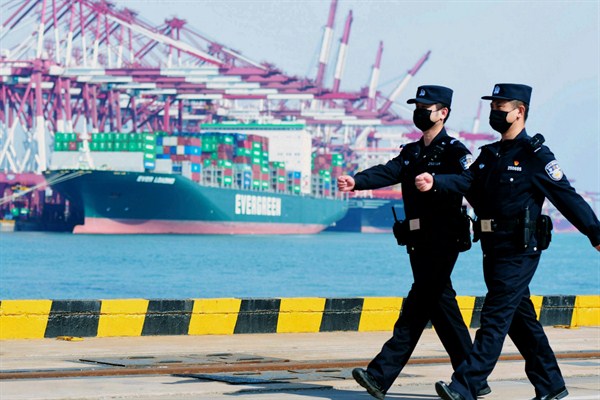Toward the end of his second term in office, former U.S. President Barack Obama said in an interview with The Atlantic that “we have more to fear from a weakened, threatened China than a successful, rising China.” It would be hyperbole to claim that the impact of the COVID-19 outbreak will create the weakened, threatened China that Obama warned about. But it could give us a glimpse.
The draconian measures China took to contain the spread of the novel coronavirus that emerged from Wuhan, the capital of central Hubei province, seem to have prevented a worst-case scenario for now. But as Howard French detailed in his WPR column last week, the government’s initial efforts to downplay the danger of the outbreak by silencing whistleblowers, as well as the brutality with which it subsequently enforced a quarantine on Wuhan and other cities in central China, have created a backlash of public outrage and mistrust.
Now, the economic costs of the epidemic are coming into focus, with data for February showing a record contraction in Chinese manufacturing, beating out the previous low set after the 2008 global financial crisis. The declines registered in China’s non-manufacturing sectors were the worst since 2011. It’s too early to tell what impact that kind of downturn in China will have on the global economy, although late last month the Port of Los Angeles was already projecting a 25 percent drop in container volume for February and a 15 percent year-on-year drop in volume for the first quarter of 2020. But it’s worth noting the difference between the 2008 manufacturing dip, which was an effect of external factors, namely lowered demand due to the financial crisis, and today’s, which will be a cause of losses further down the supply chain, due to self-imposed restrictions on domestic economic activity. In other words, 2008 highlighted the Chinese economy’s vulnerability to external shocks, while 2020 highlights the global economy’s vulnerability to domestic shocks within China.

